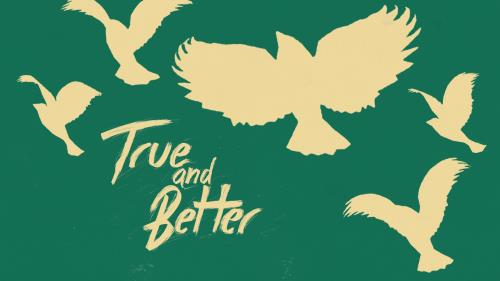-
The History Of The Redeemed: “the Lord’s Passover” Series
Contributed by Ron Tuit on Sep 28, 2016 (message contributor)
Summary: The Drama of the Gospel of the Lord Jesus continues to unfold in the institution of the Lord's Passover, protecting God's People from the disastrous tenth plague. The Passover Lamb points to the perfect sacrifice of Jesus 1500 years later.
Exodus: The History of the Redeemed: “The Lord’s Passover”
As leader of Egypt, Pharaoh’s heart was hardened toward the command of God and Moses to allow the Israelites to leave Egypt and so God promised the tenth and most dreadful plague, the killing of every firstborn in the land in Exodus 11. Then in Exodus 12:1, we read: “Now the Lord spoke to Moses and Aaron in the land of Egypt, saying, 2 "This month shall be your beginning of months; it shall be the first month of the year to you.”
God is establishing the Jewish religious calendar here: The religious year would begin with the celebration of God’s redemptive act of bringing Israel out of Egypt in the Passover. To follow the One Lord God, who is the Great I AM, begins with redemption, God’s act of saving a desperate People.
Look at verse 3: “Speak to all the congregation of Israel, saying: 'On the tenth day of this month every man shall take for himself a lamb, according to the house of his father, a lamb for a household. 4 And if the household is too small for the lamb, let him and his neighbor next to his house take it according to the number of the persons; according to each man's need you shall make your count for the lamb.”
The Israelites gathered in community, in assembly. In the New Testament, the Greek word for “church” is “ekklesia” which means gathering or assembly- “ekklesia” became “an assembly of Christians gathered for worship”. You see some of the attributes of the Church in verse 4, where if a household was too small or had no lamb, the neighbor was to share and provide for those who had nothing.
Verse 5 continues: “Your lamb shall be without blemish, a male of the first year. You may take it from the sheep or from the goats. 6 Now you shall keep it until the fourteenth day of the same month. Then the whole assembly of the congregation of Israel shall kill it at twilight (sunset). 7 And they shall take some of the blood and put it on the two doorposts and on the lintel of the houses where they eat it. 8 Then they shall eat the flesh on that night; roasted in fire, with unleavened bread and with bitter herbs they shall eat it. 9 Do not eat it raw, nor boiled at all with water, but roasted in fire--its head with its legs and its entrails (internal organs). 10 You shall let none of it remain until morning, and what remains of it until morning you shall burn with fire. 11 And thus you shall eat it: with a belt on your waist, your sandals on your feet, and your staff in your hand. So you shall eat it in haste. It is the Lord's Passover.
12 For I will pass through the land of Egypt on that night, and will strike all the firstborn in the land of Egypt, both man and beast; and against all the gods of Egypt I will execute judgment: I am the Lord. 13 Now the blood shall be a sign for you on the houses where you are. And when I see the blood, I will pass over you; and the plague shall not be on you to destroy you when I strike the land of Egypt.
The Lord’s Passover Lamb
There were many particulars which were to be included in the Lord’s Passover and all of the intricacies pointed to the Lamb of God who would be crucified. The Lamb chosen to be sacrificed had to be a year old and without blemish. There could be no fault found in this lamb. This lamb would not be an infant but a male who was in his prime and he must be a perfect sacrifice for sin which was acceptable to a Hoy and Righteous God. So too, Jesus was the Lamb without blemish; In Him was sinlessness which alone could atone for sin. In Him was righteousness which satisfied the law.
The lamb was also to be “set apart” for four days. This was significant in considering the purpose of this lamb and the promise which God made concerning the sacrifice to be made. It was no accident 1500 years later that the Lord Jesus entered Jerusalem four days before He would be the sacrificial lamb slain for sin.
The lamb must be 'slain by the whole assembly of the congregation'. Jesus also would be slain by the hand of the Jews. Not one voice was silent when the cry went out, “Crucify Him!” All of the sin of those who would believe in Him was laid upon Him as He was beaten and crucified. Why was this done? So that whoever would believe in Him would become partakers, participants in His death, saving those who would put their faith in Him. And so and each inhabitant of the house marked with the blood of the lamb must feed upon the lamb. No one who believed could be excluded.

 Sermon Central
Sermon Central


